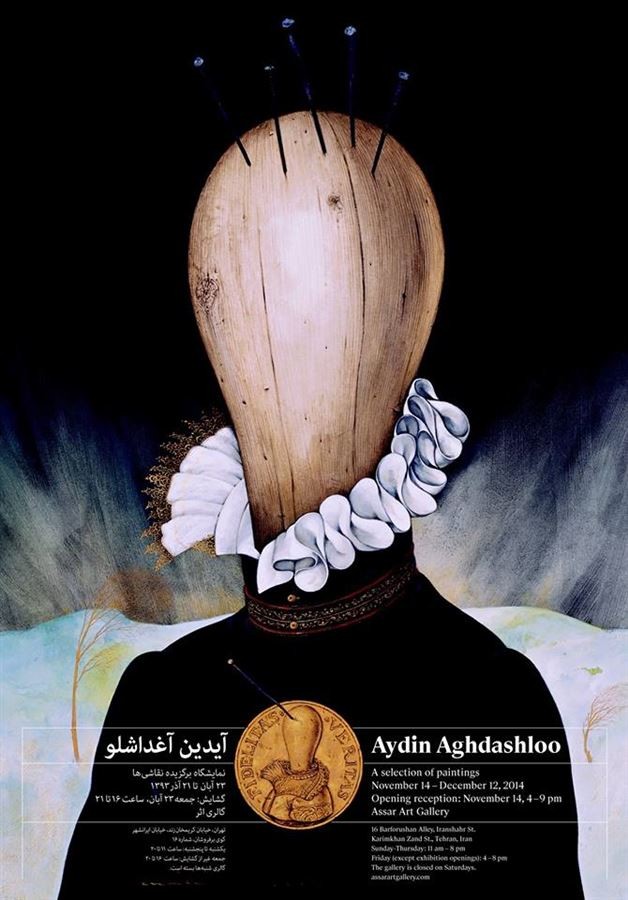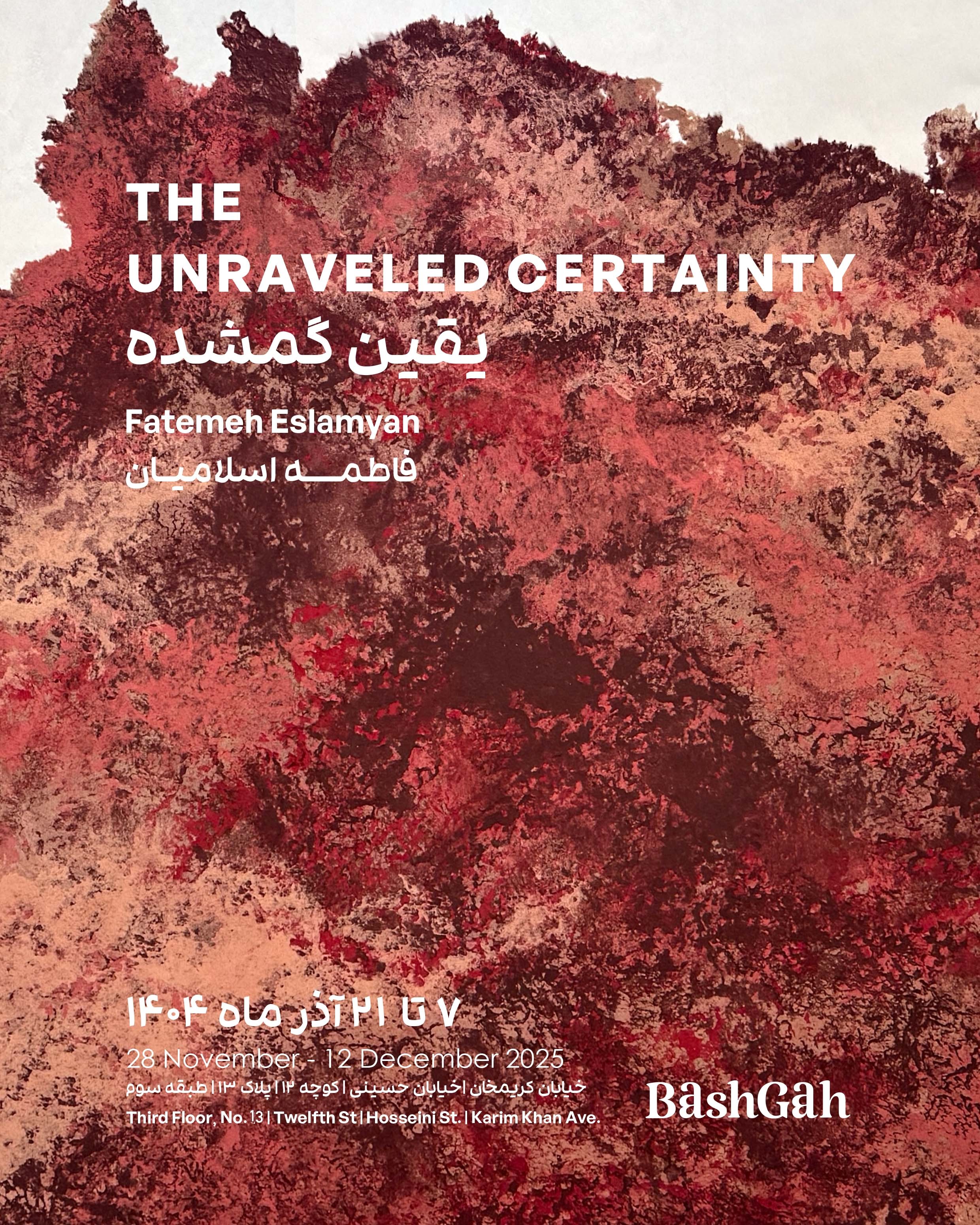Tehran,
no. 16, Barforoushan Alley, Iranshahr St., Karimkhan Zand St.
14 November 2014 - 12 December 2014
Should art not find the new and the old together within itself it will surely miss the gift of the messengers of insight, for they are daughters of memories, and memory is possible only when today and yesterday are seen as connected.
Those who haven't denied themselves such gifts are not many; few are those who know that history is not limited to calendars – it shapes cultures in such a way as to form human cosmogonies, and becomes a necessary tool for constructing a meaningful biosphere by cosmopolitan human beings.
I believe that at least in the current cultural climate of modern arts – where the dominant tendency is to stage a rebellion against the old – those who value traditions tend to be few.
Aydin Aghdashloo is perhaps one of the trailblazers and at the same time most influential of this select group. We can say, based on his oeuvres, that he doesn't see the need to follow fashionable artistic or philosophical tendencies of the day that invite an ill-affected and rebellious culture.
"Emma Bovary is me," said Gustav Flaubert to a journalist. This statement can be taken to mean that the work of an artist is often a reflection or outline of his/her own self. In the same way, Aghdashloo is depicting an old and dilapidated door and calling it “Portrait of the Artist at Forty-Eight." The self that Aghdashloo shows us is always a historical self, taking form within a meaningful landscape of events.
In addition, we can say and understand that this historical consciousness benefits from a forthright and ironic discourse that employs disciplined and consummate rhetoric. As such, I argue that his interventions are among the most lucid artistic expressions in the world of Iranian arts, the way his favorite poet, Sa'di, figures among major classical Iranian poets. Emphatic deformations, obstinate deployment of repetitious patterns in decorative forms, have created rhythmic layers that have in turn lead to rhyming structures. This requires a special methodological approach to technique.
Those in the know will no doubt agree that a masterly twist of brush can show the lightning bolt of intelligence. I mention this to remind readers that developing taste and sensibility is one of the pre-conditions of this profession. To me, Aghdashloo fulfills requisites of technique and aesthetic sensibility seamlessly.
Art in many of its manifestations is the staging of a battle between Eros and Thanatos, an unjust and always unequal battle. Aghdashloo's works also speak to this thematic, but in his more recent works, the battle has become more mysterious, introducing parody in aesthetic expression.
What is shown is what is known as tragic aesthetics. This is an ephemeral beauty doomed to death and discontinuity, of which history speaks endlessly.
Beauty standing at the shores of history, this is what the daughters of memory have brought to and inspired in us.
Babak Roshaninejad August 2014

Artists
Available Nearby Exhibitions
The Unraveled Certainty
Tehran
28 November 2025 - 12 December 2025
580 Nanometers / Yellow
Tehran
28 November 2025 - 8 December 2025

